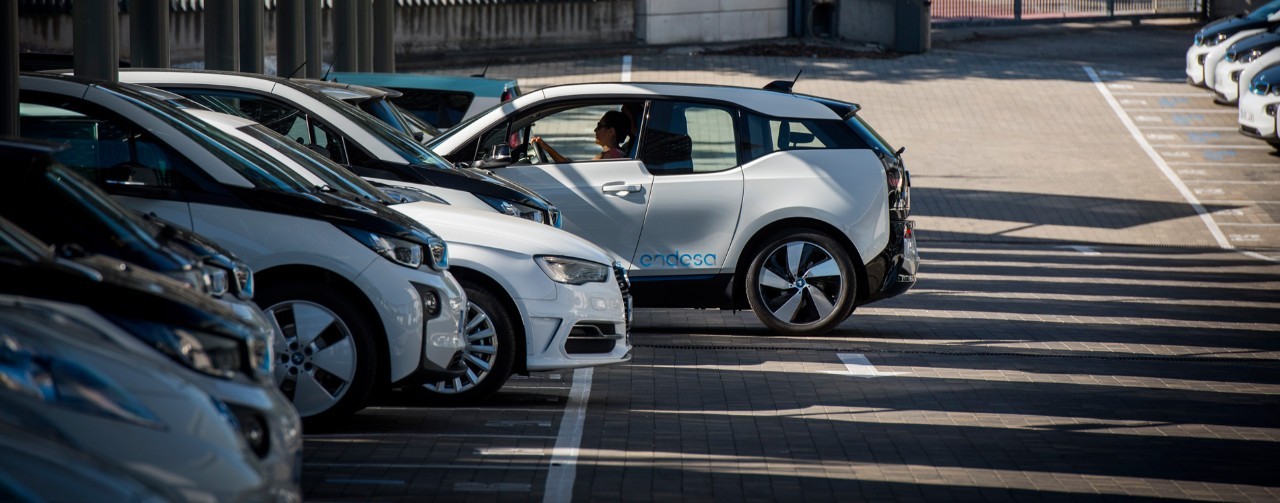
If you prefer to always view the website in English, please click here.
If you prefer to always view the website in English, please click here.
The island of La Graciosa is a unique natural site and a biosphere reserve, and is therefore a priority site to become 100% energy-sustainable. It also offers perfect test conditions for incorporating renewable energy into the electricity grid.
The eighth island of the Canaries archipelago doesn't have a single square metre of tarmac, and its energy supply depends on a cable joining the island to Lanzarote. With just over 600 inhabitants, all of whom live from fishing and sustainable tourism, and a total area of 27 square kilometres, La Graciosa is currently undertaking a major electricity innovation, i.e., moving towards a system of self-sufficiency in which it will be possible to generate, store and distribute its own electricity. In addition, it will be a clean, renewable energy. This is the aim of the project set up by a consortium led by Endesa and including the Canaries Technology Institute (ITC), belonging to the Canary Government's Ministry of Employment, Industry and Trade.
The consortium promoting the project is setting up a micronetwork on the island that integrates the distributed generation obtained using photovoltaic panels with batteries and ultracondensors that will help to manage this fluctuating energy. What's more, a wide range of technology (communications, PLC, low and medium voltage automatisms, real time monitoring and control systems, applications for energy efficiency and active demand management) can help integrate the solar energy efficiently into conventional networks.
The project was set up in 2015, and it is named after the island: GRACIOSA. In Spanish, this stands for Renewable Generation with Intelligent Storage and Consumption to Operate Distribution Networks with Auto-consumption Systems. The GRACIOSA project also includes work by the Andalusia Association of Industrial Research and Cooperation (AICIA), the Seville University Research Foundation (FIUS), Pontificia de Comillas University, the University of La Laguna and the Foundation for Research and Development of Information Technologies in Andalusia (FIDETIA).
The project is designed for both consumers and distributors, besides the marketing company, to play an active role in the system's efficiency. As well as guaranteeing the reliability of the energy supply to island residents, it will be possible to improve energy use gaining efficiency and reducing consumer costs. At the same time, emissions can be reduced thanks to integration of renewable energy and progressive implantation of electric mobility on the island.
“The main result of the project is the implementation of the Microgrid Manager, a remote system that controls the current state of the grid from offices on the island of Lanzarote.”
Jacob Rodríguez Rivero, the Innovation Project Manager for Network Technologies at Endesa Distribución
Total energy savings of about 35% have been achieved for those clients participating in the project. In addition, in the words of Juan Carlos Ruiz Aranda, the Innovation Projects Manager at Endesa Energía, this percentage is transformed into "the equivalent level of financial savings and emission reductions".
This innovative project will also be used to test out solutions that might be applied to other isolated areas that, like La Graciosa, might evolve towards a more reliable and more sustainable energy future.
“Now I'll have to swap my 4x4 for an electric car" says Adelino, whilst he looks up at the solar panels fitted on his house.
The GRACIOSA project is subsidised by the Centre for the Development of Industrial Technology (CDTI), endorsed by the Ministry of Economy, Industry and Competitiveness and co-financed by the European Union Structural Funds (EUSF).
If you want to see more images of La Graciosa, access the online album.





.jpeg)